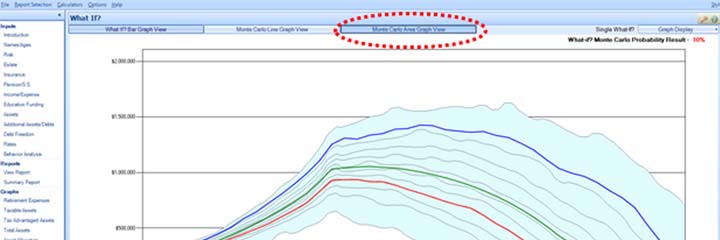Podcast: Play in new window | Download
Retirement income planning is indeed one of those topics that we've discussed on a few different occasions or probably more than just a few actually. But it's one of those topics that has a great deal of nuance.
There are really two main schools of thought when it comes to retirement income planning. One has sort of dominated the discussion for the last couple of decades and the other philosophy has been around much longer but is having a resurgence in popularity.
An explanation of the two methods
The first method that has dominated the discussion of retirement income planning for the last two decades or so actually has a few components:
1. A sum of money that you have accumulated during your working years. This will likely be a combination of money from qualified and non-qualified accounts.
2. Giving the money an assumed growth rate during your retirement years–in most cases, thirty years or more.
3. Then deciding on an assumed withdrawal rate (typically 4-5%) that will be used.
4. All of that data is plugged into a Monte Carlo simulation which will then provide us with a probability of success for the values we have provided. The calculation is performed using randomized rates of return that are based on actual returns.
So, the simulation/calculation will tell us what our probability of successful outcome will be based on all of these variables. For example, if I have $1million and I achieve an 8% rate of return and use a 5% withdrawal rate every year for 30 years–I may have a 76% probability of success.
What is success?
Well, in this case it is the likelihood that you will be able to successfully withdraw your income for the period of time you allocated.
This method certainly seems to be based on sound mathematical principles…right?
It certainly proves that math works and that human beings are capable of extraordinary intellectual capacity.
The Rub
However, we don't think much of using the Monte Carlo method. Even if you are able to achieve a 90% probability of success, there's still a 10% chance that things won't work out too well for you.
And that's a problem.
Why? Because you don't get a chance to start over. You spend your whole life accumulating wealth, so it's not like you can go back in time and have a “do over” if things don't work out.
Retirement Income Planning is About Certainty
The alternative to the first method is based more on the model that traditional pensions were constructed. This is something we have discussed in the past, here's a few posts that will give you some point of reference:
Create Your Own Pension
What's the Problem with My Pension?
Basically, I'm going to say that when I retire I need to generate income to cover a certain sum of expenses “x”. In order to achieve that level of income certainty, I need to have a sum at retirement that is equal to “y”.
To achieve that, I must calculate how much I need to be saving at a certain rate of return “z” over the period of time I have from the present to my planned retirement date. And…
I'm going to use assumptions that will drive the probability of success all the way up to 100%.
We want to achieve certainty and that's the other school of thought. Now, this school of thought has fallen desperately out of favor for last 20-30 years because when we make lower assumptions on the rate of return that we might achieve, it forces us to save much more money to achieve that certainty we're looking for.
And nobody wants to save more money.
It is very much the opposite of what is popular in the financial media at the moment. Turns out when you can use totally ridiculous projected rates of return (a la 12%), you have to save a lot more money to have your plan work out.
Admittedly it is not sexy at all, however, it is much more safe and probably the better approach. The cost of getting this wrong is dire.

